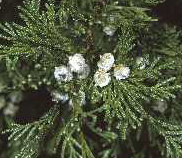 |
On-line Proceedings of the
2009 Atlantic White-Cedar Symposium
The Ecology and Management of
Atlantic White-Cedar (Chamaecyparis thyoides) Ecosystems
A Symposium held on June 9, 10, and 11, 2009 at the
City Hotel and Bistro in Greenville, North Carolina - USA |
Carbon Sequestration in Pocosins and Southeastern Peatlands
Presentation given by Curtis J. Richardson
Curtis J. Richardson is Professor of Resource Ecology and founding Director of the Duke University Wetland Center in the Nicholas School of the Environment. Dr. Richardson earned his degrees from the State University of New York and the University of Tennessee. His research interests are in the area of applied ecology and are centered on wetlands ecology and restoration. The objectives of his research are to utilize ecological principles to develop new approaches to environmental problem solving. The goal of his research is to provide predictive models and approaches to aid in the management of ecosystems.
Over the past 14,000 years, peatlands have accumulated an estimated 455 Pg (15 g) C, or approximately one-third of the global soil C pool because plant production is greater than decomposition due to waterlogging, low soil pH, and the low C-quality of peat. On a per-area basis the rate of peat accumulation initially appears relatively modest in terms of a C sink, with an average of 20-30 g m-2 yr-1; yet on a global basis peatland soils sequester approximately 76 Tg ( 12 g) C yr-1. However, with their large soil C reserves, peatlands typically have been viewed as having a potential large net negative impact on atmospheric concentrations of greenhouse gas emissions through increased fluxes of CO2 and/or CH4 under an altered future climate, drainage or farming. In the southeastern United States, significant areas of peatlands exist in the Everglades, and as pocosin ecosystems and evergreen shrub bogs distributed within the coastal plain from Virginia to Georgia. The conversion of peatlands to agriculture and development has resulted in both a loss of carbon storage capacity and a net contribution to atmospheric CO2 due to peat oxidation under ditched and drained conditions. The importance of C sequestration in restored peatlands in the southeast will be discussed along with an estimate of potential climate effects.
Proceedings Table of Contents and Conference Links
